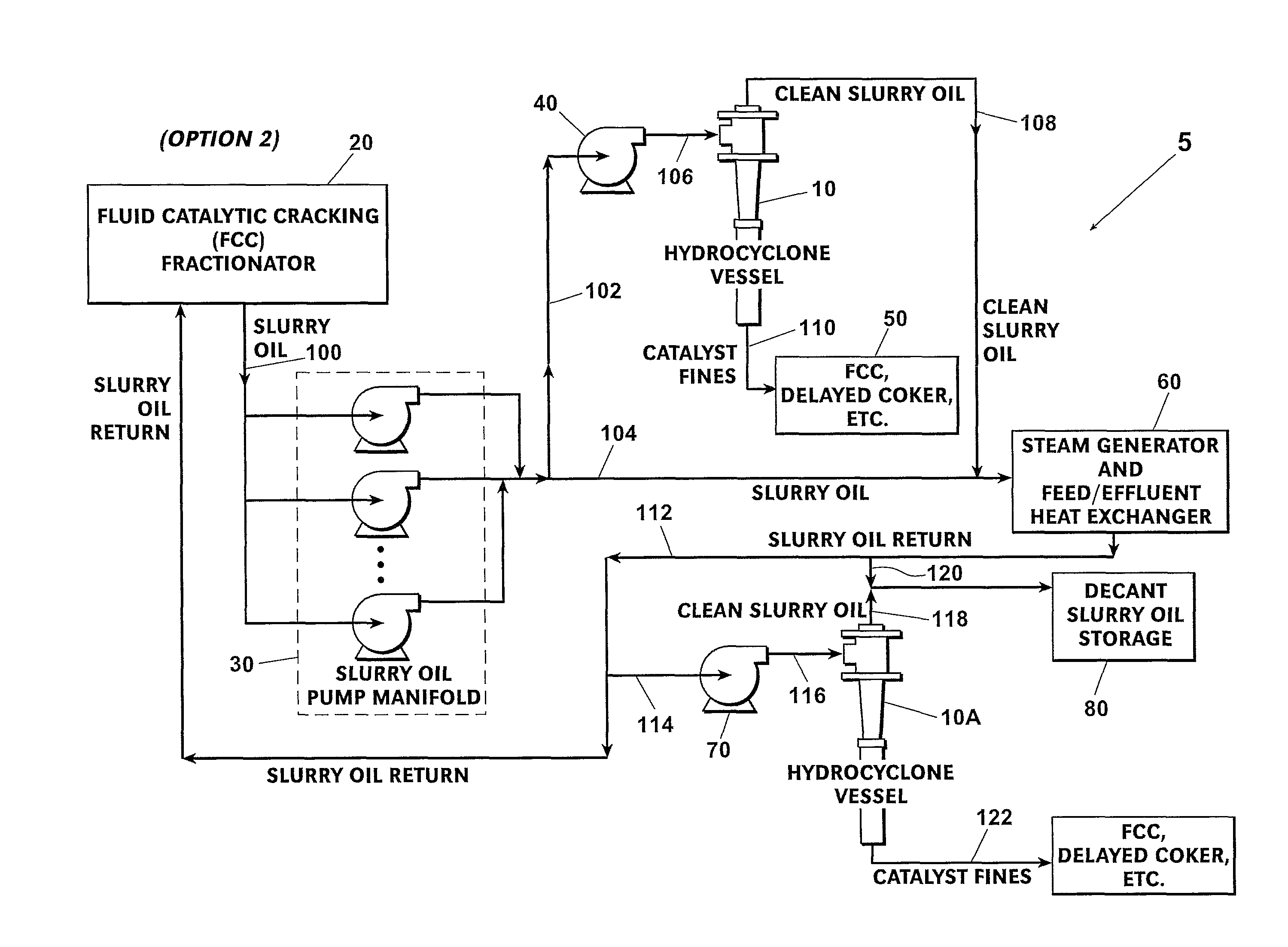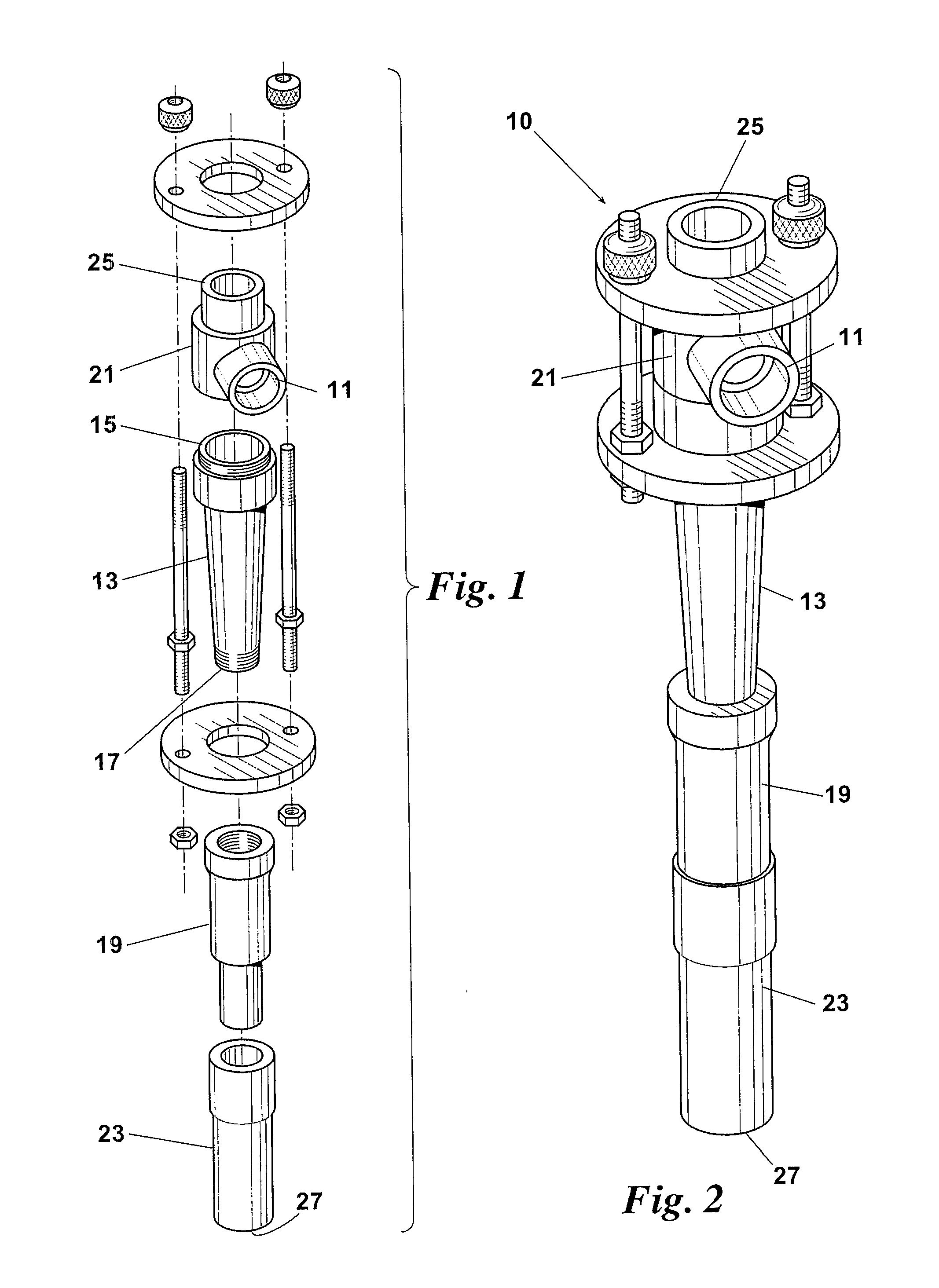Method for separating entrained catalyst and catalyst fines from slurry oil
a technology of catalyst fines and slurry oil, which is applied in the direction of separation process, effluent separation, filtration separation, etc., to achieve the effects of reducing fresh catalyst demand, high loss rate, and prolonging the process run-length of fluid catalytic cracking (fcc)
- Summary
- Abstract
- Description
- Claims
- Application Information
AI Technical Summary
Benefits of technology
Problems solved by technology
Method used
Image
Examples
Embodiment Construction
[0022]Preferred embodiments of a method for removing entrained catalyst, catalyst fines and coke particulates from a slurry oil stream will now be described in reference to the drawings. Elements shown by the drawings are identified by the following numbers:
[0023]FIGS. 1 & 2 illustrate a hydrocyclone vessel 10 well-suited for use in this method, namely, a MOZLEY™ hydrocyclone (CAMERON Process Systems, Houston, Tex.). Hydrocyclone 10 has an inlet 11 to a vortex finder cap 21 located at the upper or overflow end 15 of the body 13. The inlet flow entering inlet 11 is directed tangentially into the cap 21. Vortex finder cap 21 is designed to create spin and centrifugal force in the incoming oil slurry stream and provide for a predetermined d50 cut point. The entrained catalyst, catalyst fines and coke particulates move outward toward the internal walls of the body 13 where they mass and spin down the wall toward underflow end 17 and into spigot 19. Spigot 19 is selected to allow precise...
PUM
| Property | Measurement | Unit |
|---|---|---|
| particle size | aaaaa | aaaaa |
| temperature | aaaaa | aaaaa |
| temperature | aaaaa | aaaaa |
Abstract
Description
Claims
Application Information
 Login to View More
Login to View More - R&D
- Intellectual Property
- Life Sciences
- Materials
- Tech Scout
- Unparalleled Data Quality
- Higher Quality Content
- 60% Fewer Hallucinations
Browse by: Latest US Patents, China's latest patents, Technical Efficacy Thesaurus, Application Domain, Technology Topic, Popular Technical Reports.
© 2025 PatSnap. All rights reserved.Legal|Privacy policy|Modern Slavery Act Transparency Statement|Sitemap|About US| Contact US: help@patsnap.com



